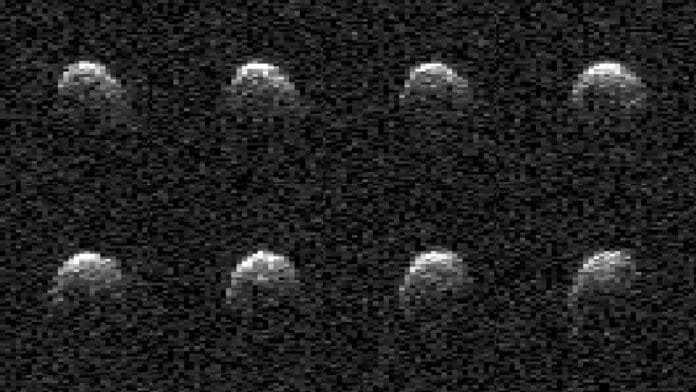On February 2, NASA’s Deep Space Network planetary radar gathered the first detailed images of a stadium-size asteroid called 2008 OS7. On February 2, 2008, OS7, a large asteroid, safely passed by Earth at a distance of about 1.8 million miles (2.9 million kilometers).
There was no risk of it hitting the planet. However, scientists at NASA‘s Jet Propulsion Laboratory in Southern California were able to gather detailed information on the asteroid using the agency’s Deep Space Network planetary radar. They were able to determine the asteroid’s size, rotation, shape, and surface details, which was not previously possible due to the asteroid’s distance from Earth.
On July 30, 2008, an asteroid was discovered by the Catalina Sky Survey, which is supported by NASA. The asteroid’s size was estimated to be between 650 and 1,640 feet (200 and 500 meters), and it rotates slowly, taking 29 ½ hours to complete one rotation. These details were identified after observing the amount of light reflected from the asteroid’s surface.
The rotational period of 2008 OS7 was determined by Petr Pravec at the Astronomical Institute of the Czech Academy of Sciences in Ondřejov, Czech Republic, and was able to determine the asteroid’s rotational period by observing its light curve. The way astronomers can see variations in the object’s shape and changes in the brightness of reflected light is fascinating and helps us understand more about the asteroid’s rotation.
Scientists from JPL used the Goldstone Solar System Radar antenna dish to capture images of the asteroid’s surface. They discovered that the asteroid has a mix of rounded and angular regions with a small concavity. Additionally, they found that the asteroid is smaller than previously estimated, measuring about 500 to 650 feet wide. The scientists also confirmed that the asteroid rotates at an unusually slow rate.
The Goldstone radar observations could provide crucial measurements of the asteroid’s distance from Earth as it passed by. These measurements can significantly assist NASA’s Center for Near Earth Object Studies (CNEOS) scientists in refining calculations of the asteroid‘s orbital path around the Sun. The asteroid 2008 OS7 orbits around the Sun once every 2.6 years, covering the distance from within the orbit of Venus and past the orbit of Mars at its farthest point.
NASA’s Center for Near-Earth Object Studies (CNEOS) manages the calculation of every known NEO orbit to provide assessments of potential impact hazards. One such NEO is 2008 OS7, which is classified as a potentially hazardous asteroid due to its proximity to Earth’s orbit and size.
However, there is no need to panic as its February 2 close approach is the nearest it will come to our planet for at least 200 years. NASA has been tasked by Congress with detecting and tracking objects 460 feet (140 meters) in size and larger that could potentially cause significant damage on the ground if they should impact our planet.
The Goldstone Solar System Radar Group and CNEOS receive support from NASA’s Near-Earth Object Observations Program, which is part of the Planetary Defense Coordination Office at the agency’s headquarters in Washington. Additionally, the Deep Space Network is overseen by the Space Communications and Navigation program office within the Space Operations Mission Directorate, which is also based at NASA’s headquarters.
